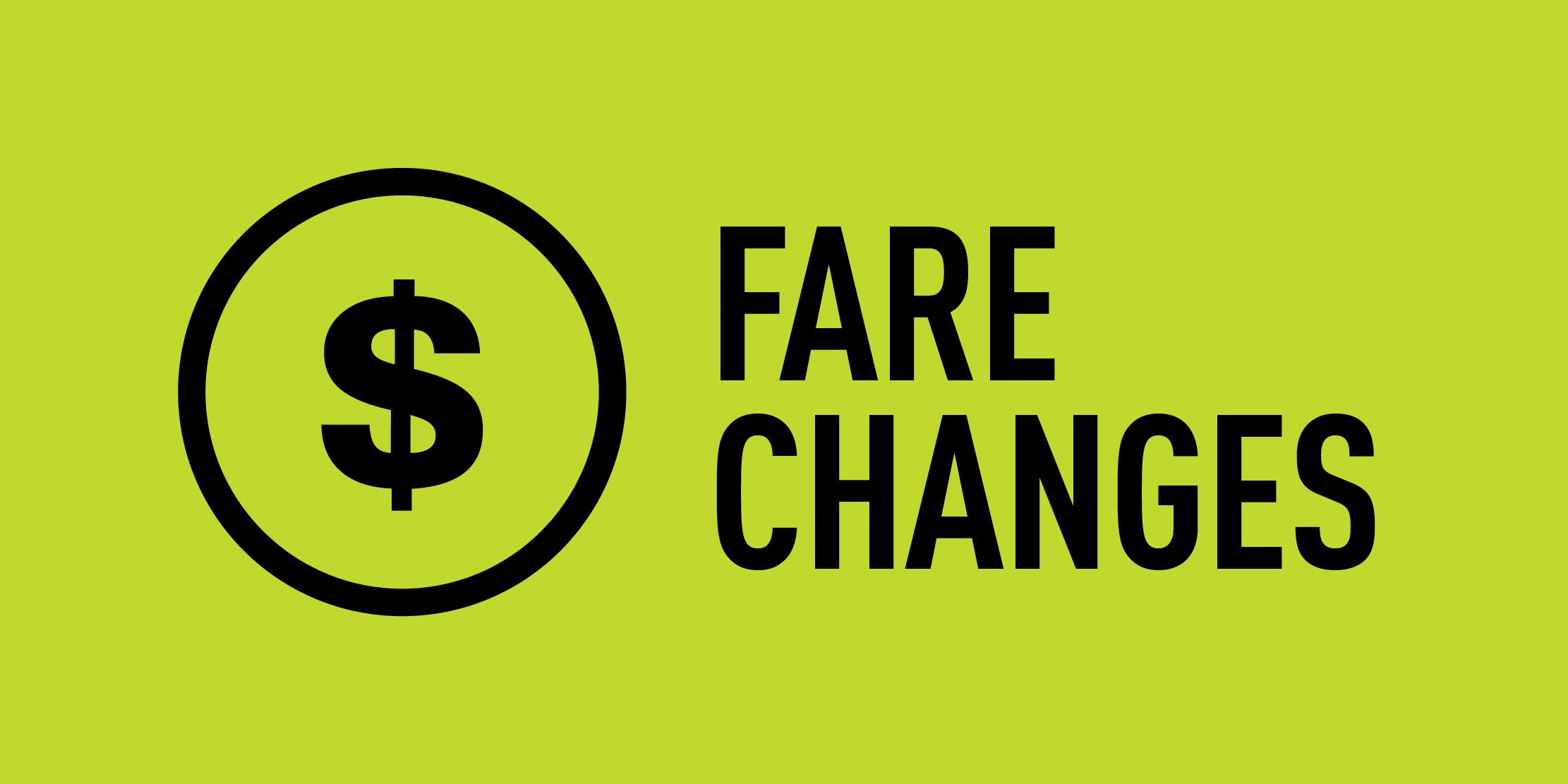
Fare changes coming July 1, 2024
In December 2023, York Regional Council approved the 2024 budget which includes a 3% annual transit fare increase effective on July 1, 2024. This is the first fare increase since 2019 and will help to address the rising costs of running the transit system. Costs of operating the transit system have been going up over the last five years due to rising fuel costs, insurance, and operation and maintenance costs.
| Fare Concession | Current fare | Fares effective July 1, 2024 |
|---|---|---|
| Adult (Ages 20 to 64 years) - using PRESTO | $3.88 | $4.00 |
| Youth (Ages 13 to 19 years) - using PRESTO | $3.03 | $3.10 |
| Senior (Ages 65+ years) - using PRESTO | $2.40 | $2.45 |
| Child* (Ages six to 12 years) - using PRESTO | $2.40 | $2.45 |
| Cash, credit or debit | $4.25 | $4.40 |
* Children five years and under ride free
Discounted YRT fares continue to be offered through the PRESTO card, YRT Pay App and the Transit App. In addition, YRT offers several discount and fare assistance programs such as the Transit Assistance Program (TAP), One Fare, Ride to GO and Fare Capping.
Frequently Asked Questions
| Why are fares increasing? | ||||||||||
|
Fare changes help cover the rising operating costs due to high inflation and help support the cost of delivering service to the Region. Over the next several years, transit will continue to make investments in the following initiatives to improve service for travellers:
|
||||||||||
| Who decided to increase the fares? | ||||||||||
|
YRT conducts an annual fare review as part of the planning and budget process. The fare review ensures balanced costs between riders and taxpayers and considers several factors including:
The fare increase was approved by York Regional Council in December 2023. |
||||||||||
| What if I have trouble paying my bus fare? | ||||||||||
|
There are several transit discount and fare assistance programs that you may be able to take advantage of:
|
||||||||||
| Will there be any changes to the Fare Capping program? | ||||||||||
|
There will not be any changes to the Fare Capping program at this time. What is Fare Capping? Each time you pay a YRT fare with your PRESTO card, it will track the number of trips. It will automatically stop charging you a fare after you’ve reached the trip caps below:
|
||||||||||
| What steps has YRT taken to try and avoid raising fares? | ||||||||||
|
YRT reviews operating costs for all services during all times and makes changes to the YRT system to better match capacity with demand. YRT also continues to explore non-passenger and other revenue opportunities. |
||||||||||
| What value will travellers see due to the fare increase? | ||||||||||
|
Over the next several years, YRT will continue to make investments to improve service for travellers, including:
|
||||||||||
| Why isn’t the transit system paid for by the municipality? | ||||||||||
|
The majority of YRT transit costs are paid for by York Region taxpayers. YRT aims to have approximately 60% of transit costs subsidized by York Region taxpayers and senior government funding and 40% subsidized by fares; currently, YRT’s revenue to cost ratio (e.g., operating revenues to direct operating expenses) is at approximately 36%, which is below the 40% YRT aims to achieve. Increasing fares will help to achieve a better balance between taxpayers and riders. |
||||||||||
| Why are fares between TTC and YRT so different? | ||||||||||
|
It’s hard to compare fares between the two transit systems because they service vastly different populations and geographic areas. York Region covers a larger geographical area and has a smaller ridership than the Toronto Transit Commission (TTC). As a result, the Region requires more support from taxpayers to provide service to all areas of the Region and support the growing ridership. The TTC is able to cover a large portion of the costs through fares but YRT is not. As a transit system servicing a large geographical area, significant transit investment is required to support growing ridership in one of Ontario’s fastest growing regions. |

